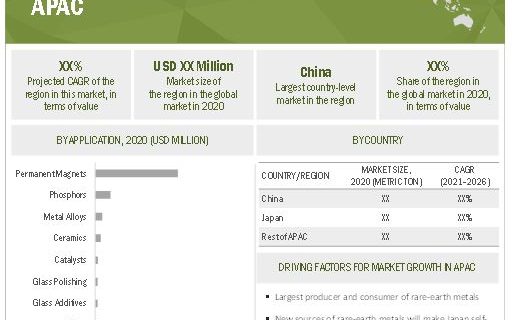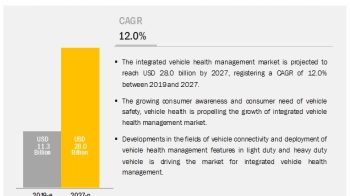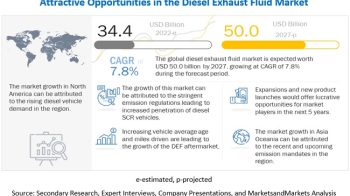
The rare-earth metals market is projected to grow from USD 5.3 billion in 2021 to USD 9.6 billion by 2026, at a CAGR of 12.3% during the forecast period
Rare-earth elements are a group of 17 chemical elements that occur together. The group comprises yttrium and the 15 lanthanide elements (lanthanum, cerium, praseodymium, neodymium, promethium, samarium, europium, gadolinium, terbium, dysprosium, holmium, erbium, thulium, ytterbium, and lutetium). Scandium is found in most rare-earth element deposits and is sometimes classified as a rare-earth element. The International Union of Pure and Applied Chemistry includes scandium in its rare-earth element definition. Rare-earth elements are all metals, and the group is often referred to as the “rare-earth metals.” These metals have many similar properties, often causing them to be found together in geologic deposits. They are also referred to as “rare-earth oxides”, as many of them are typically sold as oxide compounds.
The terbium oxide segment, by type, is projected to grow at the highest CAGR during the forecast period. Terbium is often used in compact fluorescent lighting, color displays, and as an additive, to permanent rare-earth magnets so they can function better under higher temperatures. It can also be found in fuel cells designed to operate at elevated temperatures and some electronic devices as well as naval sonar systems. Terbium is mostly used in green phosphors in all types of screens, including television, computers, and digital display boards. It is also used in alloys and the production of various electronic devices.
Do Inquiry Before Buying At https://www.marketsandmarkets.com/Enquiry_Before_BuyingNew.asp?id=121495310
The permanent magnets segment, by application, is projected to lead the rare-earth metals market from 2021 to 2026. The permanent magnets industry is the largest end user of rare earth elements. The magnets made from neodymium, praseodymium, and dysprosium are the strongest known permanent magnets. The automotive industry is a significant demand driver for permanent magnets. Major industries requiring these permanent magnets are hybrid car engines and the growing wind power turbine industry.
In terms of geographic coverage, the rare-earth metals market has been segmented into five regions, namely, North America, the Asia Pacific, Europe, and the ROW. The Asia Pacific region accounted for the largest share in 2019 and is also projected to record the highest growth rate during the forecast period. APAC is the largest producer and consumer of rare-earth metals across the globe. APAC is the top region in terms of total rare-earth material consumption due to rapidly increasing demand in China, which accounts for maximum global rare-earth consumption. It was the largest consumer of rare-earth elements in 2019, with an estimated market revenue of over USD 5.2 billion. The region is also expected to witness the fastest-growth in terms of consumption due to growing industrialization and extraction activities in China.
Know More Insights At https://www.marketsandmarkets.com/PressReleases/rare-earth-metals.asp


